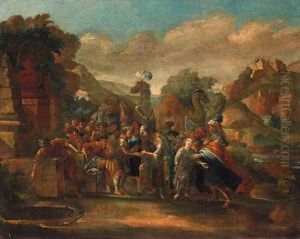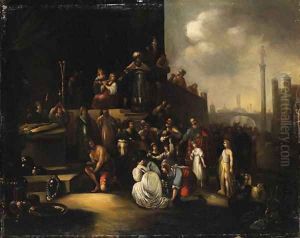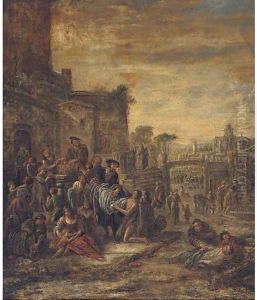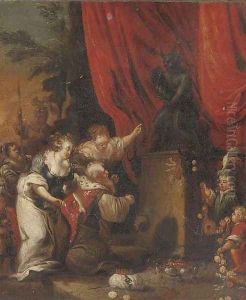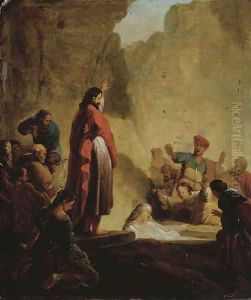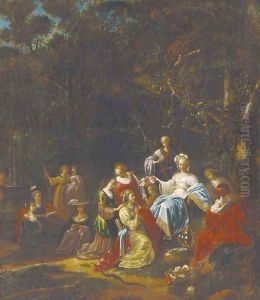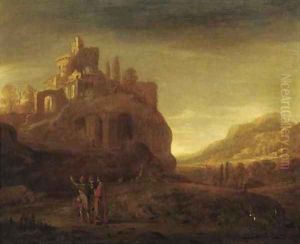Jacob Willemsz De The Elder Wet Paintings
Jacob Willemsz de Wet the Elder was a Dutch Golden Age painter, born in Haarlem in the Netherlands in 1610. He is primarily known for his religious and mythological scenes, portraits, and genre works. De Wet was a versatile artist whose oeuvre encompassed various subjects and included both large altarpieces and smaller domestic paintings.
De Wet was likely trained in Haarlem, which was a prominent artistic center in the 17th century. Although the details of his early training are not well-documented, it is believed that he may have been a pupil of the history painter Claes Corneliszoon Moeyaert. His style was also influenced by the works of Rembrandt and Pieter Lastman. Over time, de Wet developed a distinct manner characterized by a rich use of color and a strong sense of drama.
His works often depicted scenes from the Bible, ancient history, and mythology, executed with a keen attention to detail and a dramatic use of light and shadow, which was typical of the Baroque period. De Wet's biblical scenes, in particular, were appreciated for their emotional depth and the human expressiveness of the figures. He was also known for his landscape backgrounds, which he incorporated into his larger narrative works.
Jacob de Wet became a member of the Haarlem Guild of St. Luke in 1632, which was the official guild for painters. His success in Haarlem is evidenced by the fact that he took on pupils, including his son, Jacob Willemsz de Wet II, who also became a skilled painter. De Wet the Elder's influence extended through his teaching, and he played a role in shaping the artistic output of the region during his lifetime.
Throughout his career, de Wet received numerous commissions for public and private works. He was a prolific artist, and many of his paintings are still extant, held in museums and collections around the world. Jacob Willemsz de Wet the Elder died in 1675 in Haarlem. His legacy lives on through his contributions to Dutch art, particularly in his ability to convey complex narratives with emotional resonance.
